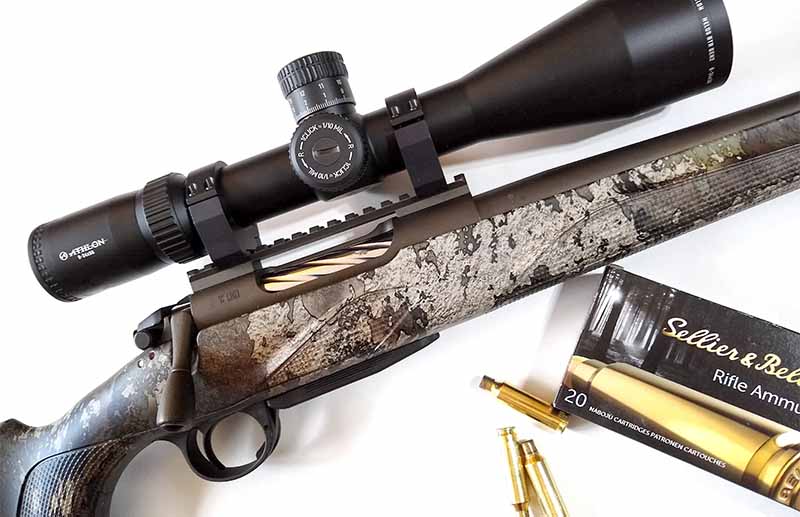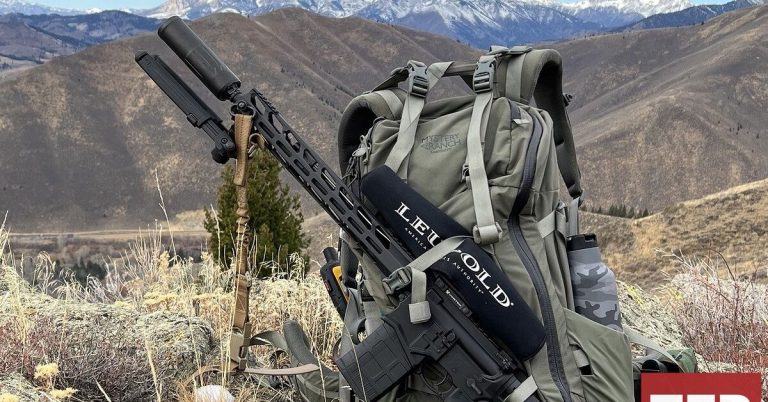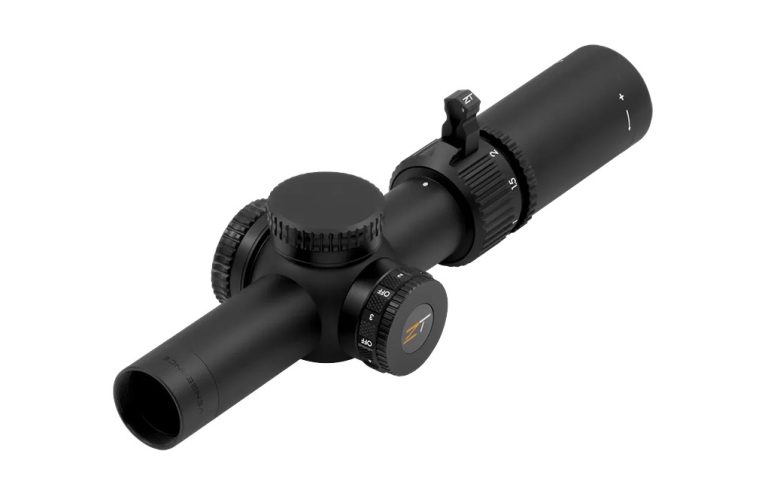A look at some of the best firearms hardware this sun-soaked corner of the world has to offer.
I’ll pitch this out at the start—I’ve got no bone with American guns. Quite the opposite, actually. Red-blooded irons are the lifeblood of my arsenal and, generally speaking, are the first options I’ll grab for a task—be it protecting hearth and home or bagging a freezer full of venison. That said, a man’s eye can wander. When mine does, it usually lands flush on a particular corner of the map: the Mediterranean.
Now, I’m the first to admit the region—for the unwary—is a fertile lemon farm. Who hasn’t heard of or has a personal story about a dreadful Turkish shotgun, so ill-conceived it wouldn’t make an acceptable club?
Fair enough.
Yet, for every troubled smoothbore exported from the Bosporus or persnickety pistol emanating from the Italian Alps, boatloads of top-rate, out-and-out classics are emanating from the Levant. Hell, some of them easily qualify as best-in-class, not to mention as alluring as a bikini-clad, olive-skinned beauty. All you need to know is what to look for when searching out the gems of the Mediterranean.
Pedersoli Tascosa Creedmoor Rolling Block

Honestly, much of the surface appeal of this rifle is its colorful history. There’s a tingle to wielding among the most utilized single-shots in history, one that’s proven its mettle as one of the all-time great precision arms. Yet, there’s more happening with the Italian reproduction than purely a façade of nostalgia for a golden age of riflesmithing. Plain and simple, the Pedersoli Rolling Block shoots.
Once dialed in, I had the .45-70 Government Tascosa Creedmoor Rolling Block (MSRP: $2,500) averaging right around ½ MOA all day long at 100 yards. Puffing Black Hills Ammo’s 405-grain Authentic Cowboy Action, that’s not too shabby.
As much as it humbles me, Pedersoli’s second-to-none manufacturing process deserves the lion’s share of the credit for these results. This is most evident in the rolling block’s massive 30-inch target barrel. Pedersoli’s boring and rifling process is second to none, involving polishing the bore to a mirror finish before cutting the rifling, giving the barrel a near-perfect bearing surface. Then, there’s the set trigger, which quite possibly could break with a stiff breeze. I estimated it roughly at 2 ounces, but that’s a shot in the dark given it barely registered on my Wheeler scale.
Furthermore, I’d be remiss if I didn’t take a moment to talk about the rolling block’s 3-inch tang Vernier rear peep sight and tunnel front sight. The frontier version of today’s high-powered rifle scopes, the system offers 300 points of elevation adjustment, as well as fine windage adjustment. Granted, it’s not the simplest system to pick up—particularly for greenhorns. However, once mastered, it’s perhaps the most accurate non-magnified aiming solution available.
Bergara B-14R
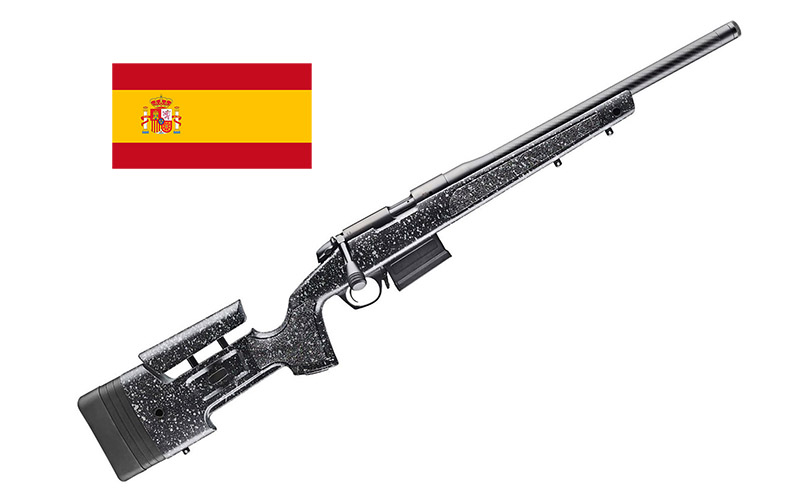
If you’ve yet to shoulder any of Bergara’s rimfires, consider yourself robbed. Far surpassing the classification of “plinkers,” the rifles are among the finest you can find short of going custom. This especially holds for the Spanish company’s B-14R line of precision irons.
Essentially a full-sized trainer built off Bergara’s wildly popular B-14 series action—only chambered for .17 HMR, .22 LR and .22 WMR—the rifle delivers next-level accuracy. Of course, that’s what it’s meant to do, given the rifle is designed to offer precision shooters a cheap way of keeping their eye and skills sharp.
Yet, you needn’t be a PRS or NRL22 ace to appreciate what Bergara has put together. Chief among its assets, the rifle’s action has a Remington 700 footprint. The most utilized dimension of stock inlets—the sky is nearly the limit in how you configure the barreled action.
Want a chassis rig? That door is open. Desire a classy hunting setup? Search out a stick of walnut and let the brushy tails beware. The same compatibility holds for 700 bases and triggers as well, making the B-14R’s system eminently flexible and customizable. Heck, Bergara even patterned the rifle’s magazines after AICS short action mags, making certain no retrofitting is required.
However, don’t feel as if you’re compromising if you stay stock with the B-14R—it’s lights-out off the shelf. Available with an 18- or 20-inch carbon-fiber barrel ($1,329) or a slightly less expensive steel barrel ($1,229), Bergara mates the barreled action to its HMR stock. A hybrid of sorts, the HMR is light enough for field use but more than adept at precision work. Thank what Bergara calls its “mini-chassis” molded into the stock for this double duty, as well as a fully adjustable length of pull and cheek riser. Plus, Bergara’s single-stage stock trigger is no slouch—most find its crisp 2.5-pound trip more than adequate for their needs.
Honestly, there’s more to chew over on the B-14R, but this is a survey of firearms, not a standalone review. Suffice to say, if you like splashing one round off another at ranges fitter for centerfires, the B-14R is for you.
Benelli Super Black Eagle 3
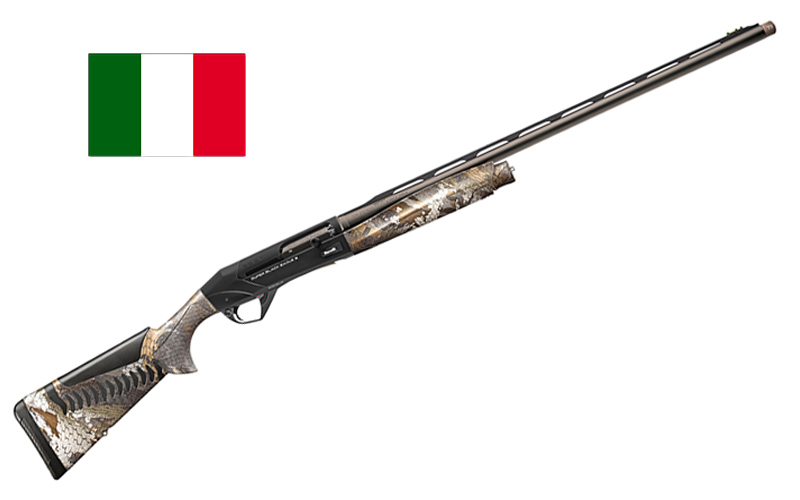
Now in its third generation, the inertia-driven auto isn’t long enough in the tooth to make an all-time claim on ducks and geese knocked from the sky. That said, hunters most certainly have slayed waterfowl at a blistering enough clip with the 12-gauge (there are 20- and 28-gauge options too) that it certainly has to be in the running. Of course, Benelli kind of planned it that way.
The Super Black Eagle’s introduction coincides with the 3½-inch shotgun shells, and the gun was among the first chambered for what became a favorite among waterfowlers. Although, pitching big dogs is only part of the story. Where the SBE (starting at $1,900) truly makes its bones in the duck blind is holding its own with the shotguns that go cha-chunk when running the action. Damn near impervious to water, sand, marsh muck and any other environmental hazard that brings lesser semis to a halt, the inertia system chews through shells as reliably as a pump-action, which is pretty much a necessity in a quality waterfowl gun.
Ruggedness generally gets the kudos with the SBE’s inertia system, but there’s a subtle benefit felt once the gun is at the shoulder: It’s nimble as all get-out. Simpler and smaller than a gas-operated gun, the SBE boasts a slimmer forend, which makes the gun much quicker on the point. And, it’s lighter, even in its 28-inch barreled configuration, than most comparable semis—in some cases by as much as 2 pounds.
Admittedly, the svelteness and inertia system put a bit of a thump to the SBE—particularly when shucking 3- and 3½-inch shells. But it’s not enough to make it a monster or dissuade you from taking after snow geese or other high-density shooting affairs. Far from it. In fact, given all the gun’s other assets, you likely won’t even take note of its recoil.
Franchi Momentum Elite
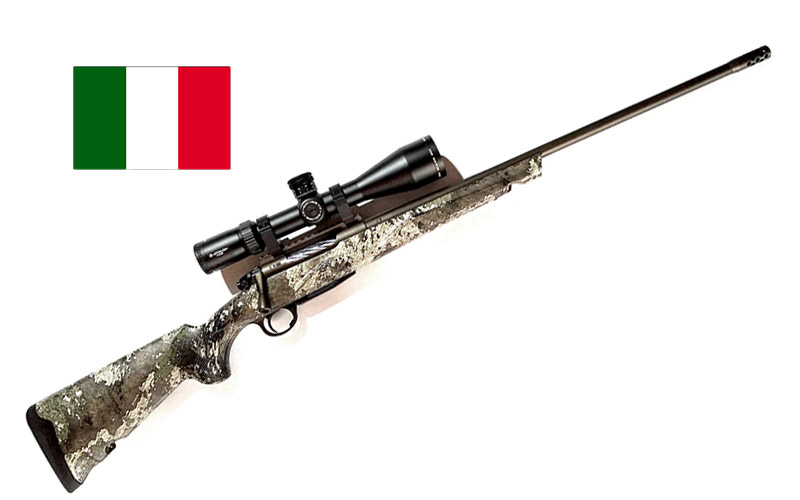
Bold statement incoming: The Momentum Elite might be among the finest budget hunters available on the market today. At least it’s drawing on par with more established affordable European rifle makers, such as Tikka and the like. Given this market is as cutthroat as the Golden Age of Piracy, that’s saying something. It’s also surprising, given the bolt-action is essentially at the front end of the shotgun maker’s run into the rifle niche.
Where Franchi succeeds is striking a sane balance between affordability and quality, a difficult compromise to be sure. This is particularly notable in the Momentum Elite’s stock, which is injection-molded polymer, but a more rigid variety than to what most have become accustomed. Alone, this creates a light, yet solid shooting platform that proves durable in the field, with some nice ergonomic touches. A large pistol grip, recessed sling studs and the fore stud moved back to better accommodate a bipod top this list. But there are worthwhile subtleties in the Momentum Elite’s stock as well. In particular, its clever recoil lug system.
Essentially, a pair of lugs are embedded in the stock and canted in a “V” configuration around the action screw. These match up to corresponding slots on the underside of the action. It doesn’t seem like much, but the system perfectly centers the receiver while creating a rock-solid mate-up near impervious to recoil. Given mechanical consistency is a key to accuracy, the system goes a long way to upping the Momentum Elite’s ability to repeatedly deliver hits.
Saving dough, Franchi uses the easy-to-manufacture three-lug fat bolt, but this also imparts some desired qualities to the rifle … namely, the rifle’s 60-degree bolt throw. Not only is this fast, a boon in case a follow-up shot is required, but it’s much more forgiving if you run a large optic. The bolt is housed in the Momentum Elite’s cylindrical action and mated with a sporter contoured 24-inch barrel with a threaded muzzle. Additionally, the rifle comes with a muzzle break—nice, but a bit of a take-it-or-leave-it proposition.
Franchi tops off the system with its very respectable Relia trigger—fully adjustable from 2 to 4 pounds. Holistically, the Momentum Elite ($1,000) comes together to create a system capable of knocking the snot out of a dime at 100 yards until sundown. (I averaged 0.59-inch groups with the 6.5 Creedmoor I tested, which, for most hunters, is much more accuracy than they’ll ever require.)
Beretta 687 Silver Pigeon III
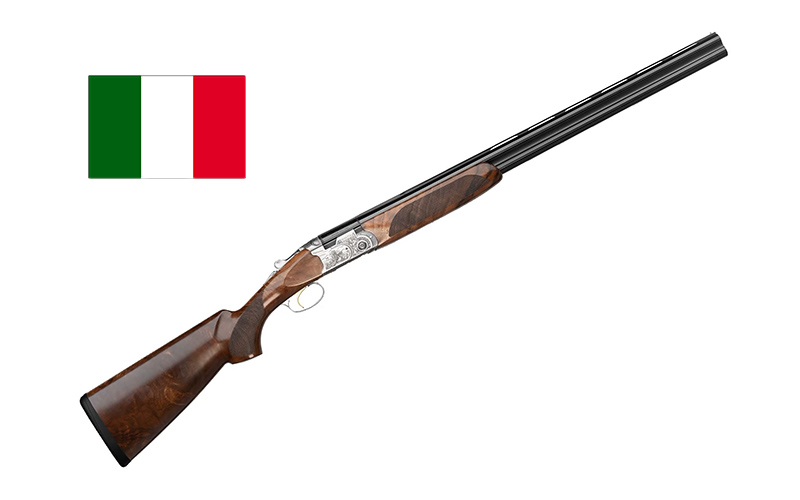
True enough, the “Mama Bear” of the 680 series isn’t the cheapest of the lot and is identical mechanically to the rest of the line. High points here include inertia-operated trigger-plate action powered by captive coil springs, conical locking lugs, fast-handling low-profile receiver and Beretta’s legendary Steelium barrels. As an aside, as comic book as the high-molybdenum steel sounds, it almost guarantees the tubes will last a lifetime, perhaps a couple. Yet, the Silver Pigeon III ($3,300) gives ample reason to pony up a bit more cash. Here we’re talking about aesthetics.
You’d be daft to think a motif of any kind leads to more broken clays or extra quail in the bag. However, the laser-engraved game scenes on the coin receiver—part of the III’s package—as well as the Class 2.5 walnut enhance the overall experience of the shotgun. It’s the same as leather seats in a car; the little extras deepen the pride of ownership and make those autumn flushes a bit more memorable. Not to mention, the flourishes make the gun a bit more exceptional when it’s handed down to the next generation.
Furthermore, Beretta’s over/unders are as reliable as the day is long and truly come into their own when shot. The manufacturer has an uncanny ability to make its production guns almost seem custom fit, a factor enhancing the firearm’s overall performance and reducing felt recoil. The 12-gauge Silver Pigeons I’ve handled (they also come in 20 and 28, as well as .410) always feel light when mounted, yet don’t tend to over-swing.
Balancing right around the hinge plate gives the gun this neutral aspect, and that makes it relatively versatile in its application. Combined with the aforementioned low-profile receiver and ample non-reflective rib, the Silver Pigeon also mounts fast and is among the most instinctual break-actions out there. For those who desire the entire package—looks, performance and grace—the Silver Pigeon III has each in spades.
Springfield Armory Hellcat
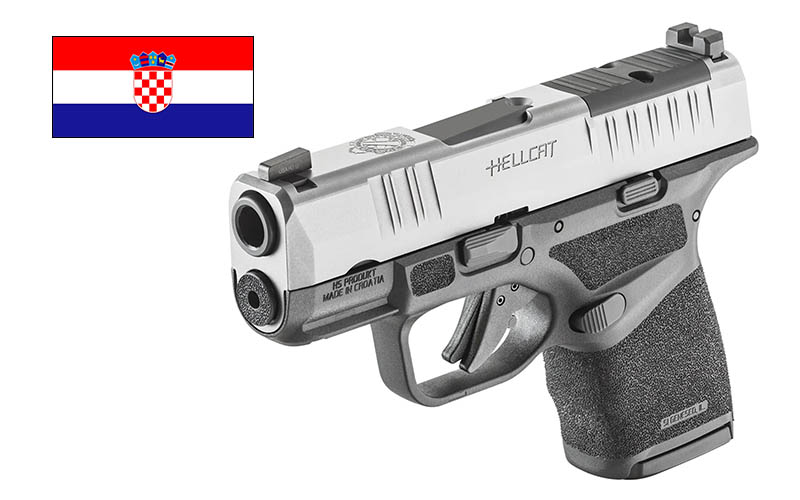
At the vanguard of the “micro nine” revolution, the Hellcat didn’t spark the sea change, but it sure as hell helped define it. Minute, enhanced capacity and relatively easy to shoot—these pretty much define the Croatian creation and the standard bearers of modern concealed-carry pistols. Pretty heady stuff.
While the Hellcat ($633 base model) hasn’t and likely won’t unseat the king—the Sig P365—it has proven to be perhaps the most adroit alternative of the micro 9mm options. Part of this is thanks to the 3-inch barreled pistol’s diminutive dimensions. Measuring 1 inch in width at its thickest point, 4 inches in height and weighing in at a tick under 18 ounces, the Hellcat is concealable in all but the tightest hot pants. Great, but anybody can make a tiny gun.
Where the HS Produkt design excels is in providing best-in-class firepower—engineering-wise, far from a walk in the park when it comes to miniaturized “nines.” Pop in a flush-fit magazine and you have 11+1 on tap; rock the extend-capacity mag and you’ve got 13+1. That’s not quite duty pistol specs, but it’s considerable peace of mind in a small gun.
The Hellcat is not a bull’s-eye pistol, but what 3-inch barreled gun is? It’s bucky enough that those unanointed in micro guns should plan on range time to acclimate to its temperament. Yet, for its size and weight, the pistol isn’t punishing. It’s got enough grip and Springfield’s aggressive advanced texturing do their parts in making the Hellcat a kitten. The pistol’s ball-and-basket sights are intuitive and as quick as a three-dot can be—despite being a bit quirky. Furthermore, Springfield offers the Hellcat in its optic-ready OSP variation for the cost of a box of defense ammo. That’s a no-brainer upgrade.
Even if the Hellcat won’t ever be the world’s most popular micro compact, it has more than proven itself among the best.
SAR 2000
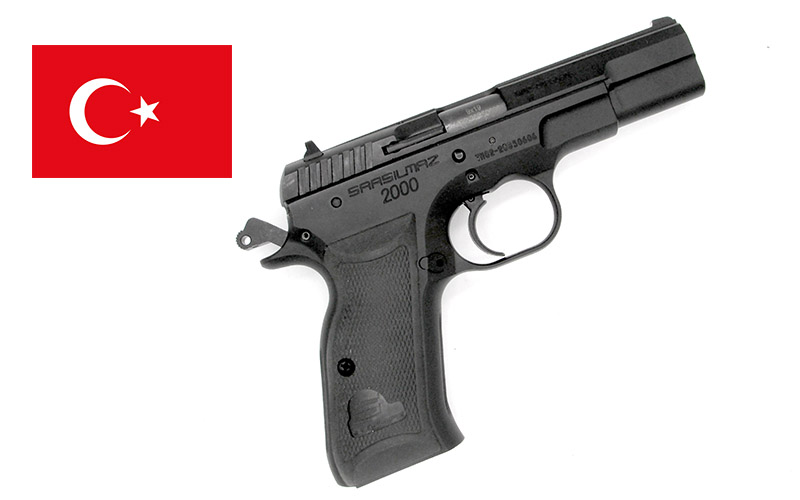
Generally speaking, Turkey is better known for its blue-light-special shotguns than its pistols. Truly a shame. The Anatolia peninsula is home to some of the world’s most underrated handguns; case in point, the SAR 2000. While the Turkish take on the Czech classic isn’t going to win the Bianchi Cup anytime soon, it is a lights-out entry-level race gun for those just cutting their teeth in competition.
Once imported by Armalite as the AR-24, the 9mm DA/SA pistol is essentially a CZ-75 clone fairly well mimicking the original “wonder nine.” However, a burgeoning competitor can expect to pay around $250 less than a CZ original. A steel frame with plenty of heft (32 ounces) and a dang respectable single-action trigger for a pistol at this price point, the SAR 2000 ($480) can run.
Especially nice, the 4.5-inch barreled pistol boasts a thumb safety, as opposed to a de-cocker. This allows for cocked-and-locked carry, giving instant access to the 2000’s crisp 5-pound break right out of the holster. Its double-action pull is … well, a double-action pull—roughly 12 pounds. Furthermore, the Sarsilmaz gets the grips’ ergonomics right, enhanced with a decent undercut trigger guard and high beavertail.
Admittedly, the 2000 has some chinks in its armor. The company doesn’t offer target sights, just a drift-adjustable rear, or an optics cut. Middling cocking serrations at the rear, combined with a slick pyramidal fore slide, proves unforgiving, especially under the clock. And the lack of a flared magwell complicates expedient reloads. All these likely mean those who become dedicated match shooters will eventually outgrow the 2000. Until they do, competitors should have a blast and their share of success behind the Turkish treasure.
Editor’s Note: This article originally appeared in the October 2023 issue of Gun Digest the Magazine.
More On Mediterranean Guns From This Article:
- The Pedersoli Tascosa Creedmoor Rolling Block
- The Bergara B-14 Squared Crest Rifle
- The Benelli Super Black Eagle 3
- Reviewing The Franchi Momentum Elite
- SAR 2000 Review: A Turkish Take On The Czech Classic

Next Step: Get your FREE Printable Target Pack
Enhance your shooting precision with our 62 MOA Targets, perfect for rifles and handguns. Crafted in collaboration with Storm Tactical for accuracy and versatility.
Subscribe to the Gun Digest email newsletter and get your downloadable target pack sent straight to your inbox. Stay updated with the latest firearms info in the industry.







